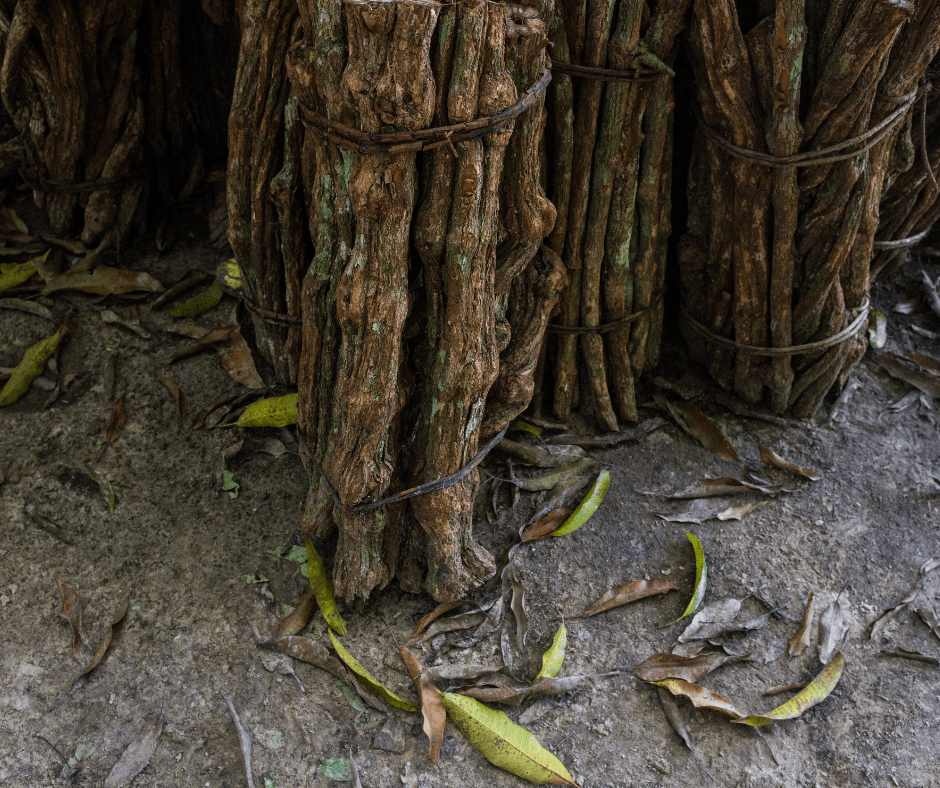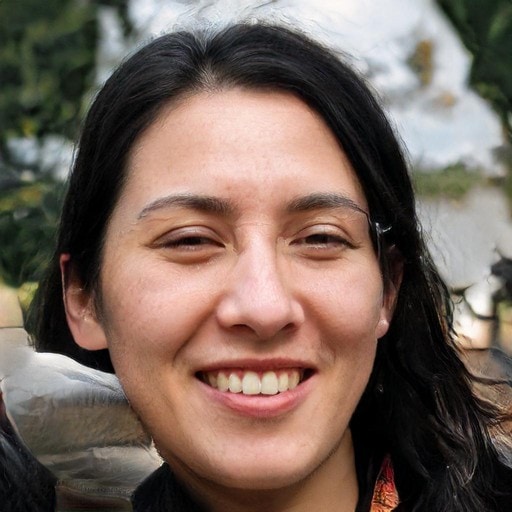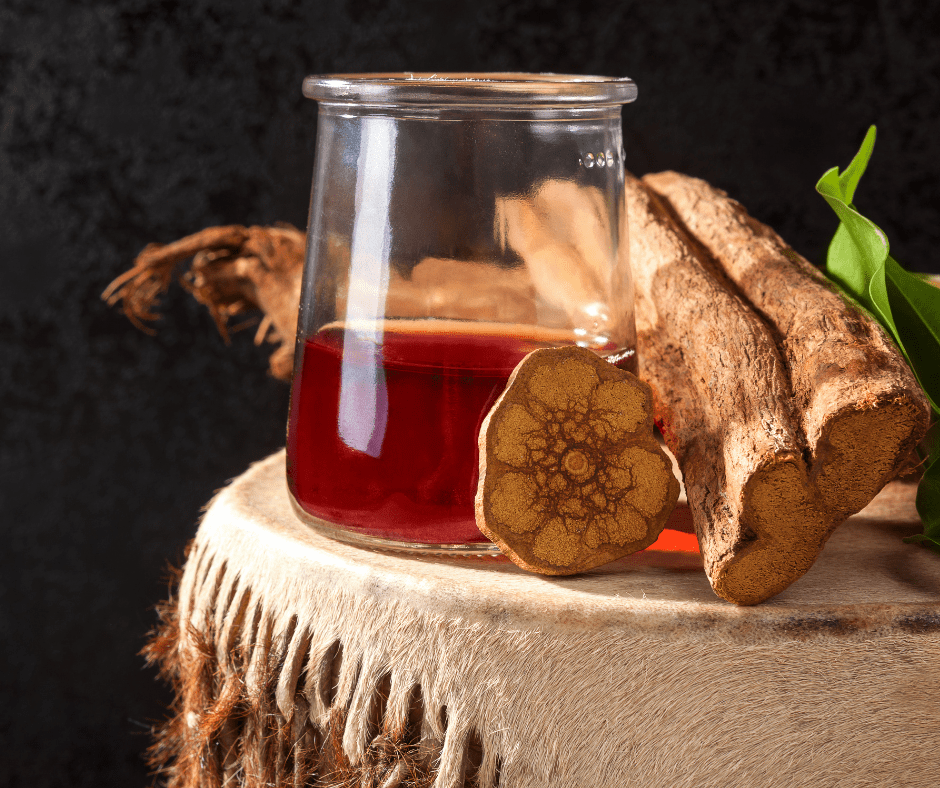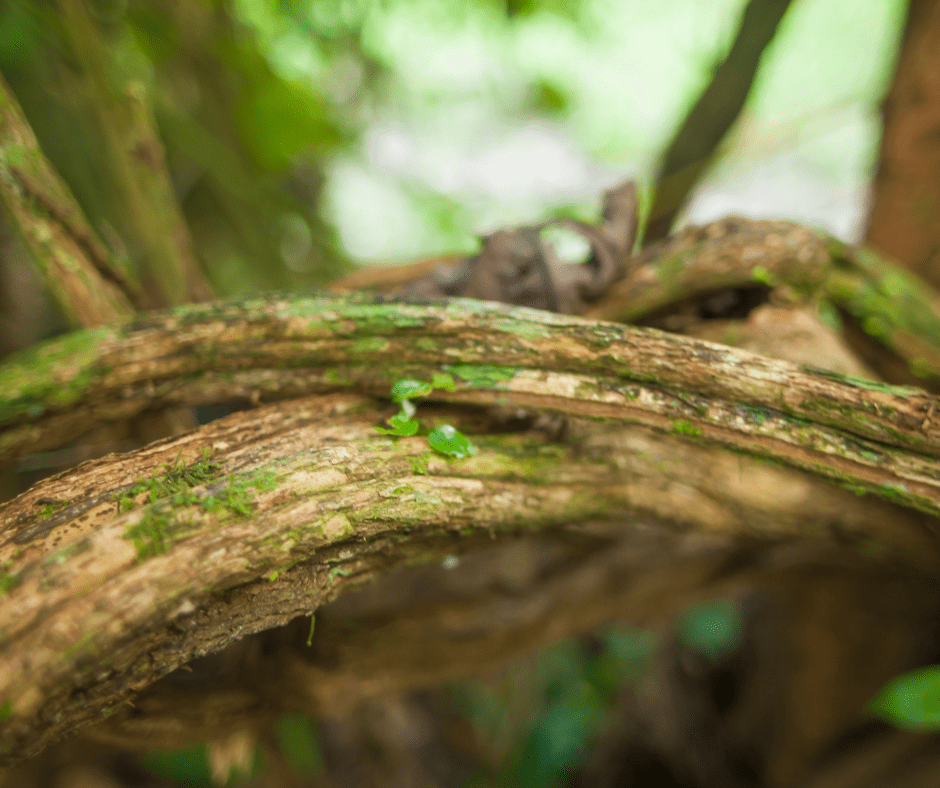Key Takeaway:
- Ayahuasca is a potentially risky substance that should only be used under the care of a qualified shaman, as it can lead to physical and psychological risks.
- Some of the physical side effects of ayahuasca use include nausea, vomiting, and diarrhea, as well as increased heart rate and blood pressure. Psychological risks include the potential for intense, challenging experiences that can be difficult to process or integrate.
- Despite these risks, ayahuasca has been shown to have potential benefits for mental and emotional wellbeing, including alleviating symptoms of depression and anxiety, and may have physical health benefits as well. Approaching ayahuasca use with intention, in a safe and supportive environment, can help to mitigate the associated risks.
Are you considering taking part in an ayahuasca ceremony? It’s important to understand the risks of this traditional medicine before making a decision. You may be wondering, is ayahuasca safe? Find out more about its potential dangers.
Defining Ayahuasca: What is it?
Ayahuasca is a powerful drink that has been used in indigenous cultures for centuries. It is made by boiling together various plant species, which are known to contain DMT and harmine. DMT is the primary psychoactive substance in the drink, while harmine is an MAO inhibitor that allows DMT to be active when ingested orally.
When taken, ayahuasca creates an intense psychedelic experience that lasts several hours. The experience includes vivid visuals, altered perception of time and space, and a sense of connection with nature or a higher power.
The reason behind how ayahuasca works is not fully understood yet. Some researchers speculate that it activates parts of the brain involved in sensory perception and emotional processing, leading to the hallucinations and subjective experiences reported by users.
It’s worth noting that ayahuasca should only be taken under supervision from an experienced shaman or facilitator. This sacred plant medicine should be treated with respect and approached with intention for healing or spiritual growth.
Pro Tip: Before taking ayahuasca, prepare your body by avoiding stimulants like caffeine or alcohol for at least 24 hours prior. Also, set your intention beforehand and enter the experience with an open mind. Book An Ayahuasca Retreat Ayahuasca Is A plant-based medicine that may have side effects. Make sure and do independent research before attending a retreat.
As I sat among my tribe deep within the Amazonian forest preparing for my first journey into the world of ayahuasca, I couldn’t help but feel a sense of awe at being able to partake in something so sacred and ancient – something that had been passed down through generations of indigenous cultures.
Ayahuasca’s Cultural Significance and History
Ayahuasca has been used in traditional South American shamanic practices for centuries. It is a brew made from the Banisteriopsis caapi vine and various other plants, and it is known for its powerful hallucinogenic effects. However, Ayahuasca’s cultural significance and history go far beyond just its psychedelic properties.
Ayahuasca has played an integral role in many indigenous Amazonian cultures as a tool for spiritual guidance and healing. Shamans would use Ayahuasca to communicate with spirits, receive visions, and gain insight into the nature of human existence. The brew was typically consumed during long, elaborate ceremonies led by experienced shamans who were highly respected members of their communities.
The psychoactive compounds found in Ayahuasca are believed to work by disrupting the brain’s normal functioning and opening up new channels of perception. Ayahuasca contains DMT (dimethyltryptamine), a substance that can also be found naturally in small quantities in the human brain. When consumed with other plant compounds that help regulate its effects, DMT can induce powerful visions and deep insights into the nature of reality.
One interesting aspect of Ayahuasca’s cultural significance is that it has become increasingly popular outside of South America in recent years. Westerners have been drawn to the brew’s purported ability to bring about profound insights into personal issues like addiction, depression, and anxiety. As such, there has been something of a global resurgence in interest around Ayahuasca ceremonies.
If you’re considering trying Ayahuasca yourself, there are some things you should keep in mind to ensure your safety throughout your experience. Firstly, it’s important to only consume Ayahuasca under the guidance of an experienced shaman. This person should be knowledgeable about proper dosages and how to handle potential complications that might arise during your ceremony.
Additionally, it’s important to understand that consuming Ayahuasca can be extremely intense—physically and emotionally—and you should be prepared to face some challenging experiences. Be sure to seek out resources that can help you prepare for your experience, including various books and documentaries that explore the subject in depth.
With that said, it is important to remember that Ayahuasca can present potential health risks. In the next section, we will dive deeper into these risks and what they might mean for you.

Is Ayahuasca Safe? Understanding the Potential Health Risks
As a curious adventurer, I’ve always been intrigued by the ancient plant medicine Ayahuasca. But with any kind of substance, comes concerns about safety. In this segment, we will delve into the potential health risks associated with Ayahuasca. There are various physical effects, such as nausea and vomiting, that are well documented, but what about psychological dangers? We’ll also delve into how the plant medicine interacts with other substances, and if there are any precautions you should take.
So, let’s address the elephant in the room – is Ayahuasca safe?
Physical Effects of Ayahuasca
Ayahuasca is a potent plant medicine that has been used by indigenous people for centuries. It is made by brewing two different plants, the Banisteriopsis caapi vine and the leaves of the Psychotria viridis shrub. The physical effects of ayahuasca are unique and profound.
The active ingredient in ayahuasca is DMT, which is a powerful hallucinogenic compound. The combination of DMT and MAO inhibitors in the caapi vine creates an effect that lasts for several hours, leading to intense visual and auditory hallucinations, altered states of consciousness, and a feeling of connectedness to everything around you.
The physical effects of ayahuasca can vary depending on the individual and their dose, but some common experiences include:
- nausea
- vomiting
- dizziness
- diarrhea
- sweating
- increased heart rate and blood pressure
- changes in body temperature
- These effects are usually short-lived and subside after a few hours.
Interestingly, research has shown that ayahuasca can stimulate new neuron growth in the brain’s prefrontal cortex. This area is responsible for executive function such as decision-making, creativity, memory recall and emotional regulation.
Pro Tip: It’s important to remember that each person reacts differently when taking Ayahuasca. Before consuming this psychedelic it’s important to make sure it doesn’t interfere with any medication you might be taking or health issues that you may have. It would be best if taken under medical supervision.
Hook: While the physical effects can be intense on its own; what about the psychological risks? Let’s take a closer look at the potential mental side-effects – they’re just as fascinating!
Psychological Risks of Ayahuasca Use
When it comes to ayahuasca, a strong medical and spiritual tool that originated in the Amazon rainforest, the psychological risks of use should not be ignored. Ayahuasca is derived from two different plants and contains a powerful psychedelic compound known as DMT which interacts with serotonin receptors in the brain, causing intense visual and auditory hallucinations. The reason why people report such profound transformations is because ayahuasca forces them to confront their deepest fears and traumas within themselves.
The psychological risks of ayahuasca use are multifold. One major concern is the potential for retraumatization or triggering of past trauma during experiences. People who struggle with mental health issues such as depression or anxiety have been found to be more vulnerable towards these triggers and may end up worsening their mental instability after taking ayahuasca.
Moreover, studies have shown that individuals who enter into an ayahuasca ceremony without proper preparation can face negative outcomes like paranoia, panic attacks, delusions, psychotic episodes and even the risk of self-harm due to feelings of helplessness or distress. It’s important to note that depending on various factors like dosage, individual physiology, set and setting; individual experiences can vary greatly.
Pro Tip: Before committing yourself to an ayahuasca ceremony or any plant medicine journey, make sure you do your research. Consider attending talks by experienced ayahuasqueros (traditional healers) who will offer insights into the conditions under which it should not be taken at all.
If you are wondering whether your history of drug use might impact your experience with Ayahuasca – Don’t worry! Understanding Interactions with Other Substances will provide you some valuable hints on this subject.
Understanding Interactions with Other Substances
Understanding Interactions with Other Substances is an important aspect to consider while exploring the potential health risks associated with Ayahuasca. The human body is complex and there are various substances that interact differently with each other in the body. Thus, understanding how Ayahuasca interacts with other substances becomes crucial.
Ayahuasca contains DMT, a powerful psychedelic compound, which primarily acts on the serotonin receptors in the brain. It also contains MAOIs (monoamine oxidase inhibitors) that inhibit the breakdown of DMT in the digestive system, allowing it to reach the bloodstream and cross the blood-brain barrier. However, this combination of compounds can lead to dangerous interactions when consumed alongside certain substances such as certain antidepressants or stimulants.
Moreover, certain dietary choices can also affect how Ayahuasca interacts with other substances. For example, consuming foods high in tyramine content like aged cheese and fermented meats while on Ayahuasca can lead to a hypertensive crisis due to its interaction with MAOIs present in Ayahuasca.
Pro Tip: If you are planning to consume Ayahuasca, it is important to do your research beforehand about any medications or supplements you may be taking and make sure they don’t interact negatively with Ayahuasca. Additionally, avoid certain food items that have been known to cause negative reactions.
Next up – Ready for a trip down the rabbit hole? Let’s explore the potential benefits of Ayahuasca!

Exploring the Potential Benefits of Ayahuasca
As someone who has personally experienced the transformative power of Ayahuasca, I can attest to its potential benefits. In this part of the article, we’ll take a closer look at the physical, mental, and emotional benefits that Ayahuasca has been said to provide.
Firstly, we’ll discuss Ayahuasca’s physical health benefits and how they have been reported to help individuals overcome addiction, depression, and even reduce inflammation. Next, we will focus on Ayahuasca’s mental and emotional benefits, such as enhancing spiritual growth and increasing self-awareness. Join me as we explore the many ways in which Ayahuasca may offer positive potential for those seeking a deeper understanding of themselves and the world around them.
Ayahuasca’s Physical Health Benefits
Ayahuasca’s Physical Health Benefits are numerous and varied, making it a popular choice for people looking to improve their overall well-being. The plant-based brew has been used by indigenous Amazonian tribes for centuries to treat a variety of ailments, and recent research suggests that it may have benefits beyond what was previously known.
Ayahuasca contains several powerful alkaloids, including dimethyltryptamine (DMT) and harmine, that can produce profound physical effects in the body. These compounds work to stimulate the release of neurotransmitters like serotonin and dopamine, which can help regulate mood, appetite and sleep patterns.
One of the most intriguing aspects of Ayahuasca’s Physical Health Benefits is that it seems to be able to “reset” various systems in the body. This means that it can help address chronic health issues like autoimmune disorders and inflammation by essentially rebooting the immune system. It also helps address chronic fatigue by increasing energy levels.
Interestingly, Ayahuasca’s Physical Health Benefits extend beyond just bodily functions. Many users report feeling more connected with nature, experiencing less anxiety or depression, increased creativity and better overall mood. Additionally, those who partake in Ayahuasca ceremonies often report feeling more connected to others who have shared similar experiences.
If you’re interested in exploring Ayahuasca’s Physical Health Benefits further but are hesitant about safety concerns or unsure how to navigate this alternative form of healing – sign up for one of the medical retreats or programs run by qualified facilitators. Don’t miss out on potential natural alleviation of certain conditions or improvement in general wellness levels.
After exploring Ayahuasca’s Physical Health Benefits, let me hook you by telling you how its Mental & Emotional benefits can be profound!
Ayahuasca’s Mental and Emotional Benefits
For centuries, indigenous communities in the Amazon rainforest have used ayahuasca as a spiritual and medicinal brew. In recent years, it has gained popularity as a tool for personal growth and healing in the Western world. Ayahuasca is known for its potent effects on the mind and emotions, with many people swearing by its therapeutic benefits.
Ayahuasca contains two main compounds: DMT, a powerful psychedelic substance that induces vivid hallucinations; and MAO inhibitors, which allow DMT to be absorbed orally. The combination of these substances results in a unique experience that can trigger profound insights and help people overcome emotional trauma.
One reason why ayahuasca works so well is its ability to promote introspection. During an ayahuasca ceremony, participants are encouraged to look inward, confront their fears and shadow side, and gain a deeper understanding of themselves. This process can lead to greater self-awareness, acceptance, and transformation.
Moreover, ayahuasca has been shown to increase neuroplasticity – the brain’s ability to create new connections and rewire itself. This means that it may be particularly useful for treating conditions like depression and anxiety, which are often rooted in negative thought patterns. It also explains why some people report long-lasting changes after just a few ayahuasca sessions.
I recall one particularly impactful ayahuasca experience I had several years ago. During the ceremony, I was confronted with my deepest fears – abandonment, failure, rejection – all at once. As terrifying as it was, something shifted inside me that night. I realized that these fears were not who I truly was; rather they were stories I had been telling myself for most of my life. From then on, I began living more authentically – taking risks, pursuing my passions – without letting fear hold me back.
If you’re considering trying ayahuasca for yourself or someone you know- hold on. Before you do, you’ll want to be aware of the safety considerations for ayahuasca use.

Safety Considerations for Ayahuasca Use
When it comes to using Ayahuasca, many people are curious but understandably concerned about safety. In this part of the article, I’ll explore crucial safety considerations to keep in mind.
Firstly, we’ll take a deep dive into the importance of working with a qualified shaman and why it matters. Secondly, I’ll talk about the steps to take when preparing for and recovering from Ayahuasca experiences, which can help minimize risks and enhance benefits. Lastly, we’ll look at how setting and intention can positively impact the experience and contribute to a safe and successful journey. It’s essential to understand these safety considerations before making any decisions about Ayahuasca use.
Working with a Qualified Shaman: Why it Matters
The practice of Ayahuasca ceremonies is a complex and ancient tradition that has been gaining popularity in recent years. However, it is important to note that working with a qualified shaman is essential when participating in these ceremonies. The reasons why it matters go far beyond simply having someone lead the ceremony.
Shamans who are trained and experienced in the Ayahuasca tradition understand the importance of preparation and creating a safe space for participants. They are knowledgeable about the potential risks and can help prevent negative experiences by guiding participants through the ceremony. Additionally, they possess unique abilities that allow them to communicate with the spirit world, which can bring spiritual healing and transformation to those involved.
It’s important to note that not all shamans are created equal. There are many ‘shamans’ who lack proper training and have questionable intentions. Working with a qualified shaman ensures that you’re working with someone who has undergone proper training, understands the cultural significance of Ayahuasca, and holds genuine intentions for leading ceremonies.
Pro Tip: When searching for a shaman, make sure to do your research thoroughly. Seek out referrals from trusted sources or visit centers where there are trained facilitators on staff.
Preparing for and Recovering from Ayahuasca Experiences
Preparing for and Recovering from Ayahuasca Experiences is crucial for those seeking to engage with this ancient plant medicine. The process of ayahuasca can be intense, both physically and mentally, and requires proper preparation beforehand and adequate support afterwards.
Before embarking on an ayahuasca experience, it is important to research and educate oneself fully about what to expect during the journey. This includes understanding the potential physical sensations, emotional responses, and coping mechanisms to utilize when necessary. Additionally, it is recommended to consult with a trusted shaman or experienced practitioner who can provide guidance throughout the process.
During the preparation phase, it is also essential to adhere to a strict dietary regimen that excludes certain foods such as meat, dairy, and alcohol in order to cleanse the body prior to ingestion of the plant medicine. Some individuals also practice yoga or meditation as a means of preparing their minds for the journey.
Recovering from an ayahuasca experience involves taking time for self-care and introspection. This may include restorative practices such as massage therapy, acupuncture, or simply getting more sleep. It is also beneficial to journal about one’s experience in order to integrate any insights gained during the journey into daily life.
Some suggestions for preparing and recovering from ayahuasca experiences include practicing gratitude and setting intentions before beginning each session. Additionally, creating a safe and comfortable environment with supportive individuals can aid in facilitating a positive experience. Lastly, practicing mindfulness techniques throughout the process can help individuals navigate challenging emotions or physical sensations.
As you continue on your journey towards spiritual growth through ayahuasca use, it is imperative that The Importance of Setting and Intention be emphasized in order to make each experience meaningful and transformative.
The Importance of Setting and Intention
Setting and intention play a vital role in any endeavor, including Ayahuasca use, where the consequences can be potentially life-altering. It is an elaborate process that involves preparing the environment meticulously and reflecting on personal reasons behind taking Ayahuasca.
The importance of setting refers to the physical and emotional environment in which Ayahuasca ceremonies take place. This encompasses choosing a proper location, ensuring comfort, and creating a sacred space, such as using candles or burning sage. Intention in this context means having a clear purpose or goal for taking Ayahuasca – healing from past traumas, finding oneself, or building a stronger relationship with spirituality.
Research has shown that the effectiveness of Ayahuasca is closely related to setting and intention. An individual who utilizes this plant medicine without sincere intentions or in inappropriate environments might not receive benefits from it at all. It’s crucial to understand that psychedelics amplify emotions and experiences; therefore, being in comfortable and safe surroundings causes an increase in positive effects.
Moreover, many factors contribute to making an ideal setting for ayahuasca use. A supportive guide who shields participants from potential harm during the experience through supervision is essential. Participants also need a conducive physical environment with enough privacy to explore their inner selves freely. Lastly, incorporating rituals like meditation or prayer has been found to improve one’s connectedness with the universe.
One incident that highlights these critical factors occurred when eight people died after taking part in an ayahuasca ceremony at a spiritual retreat center. The victims were aboard with no proper medical attention available if anything went awry; worse still was the revelation that the perpetrators held no legitimate certifications as healers or shamans.
Five Facts About “Is Ayahuasca Safe?”:
- ✅ Ayahuasca is a powerful psychedelic brew made from the ayahuasca vine and other plants, traditionally used for spiritual and medicinal purposes in the Amazon basin. (Source: National Geographic)
- ✅ While ayahuasca has been shown to have potential benefits for mental health conditions like depression and addiction, it can also have serious physical and psychological risks, particularly when taken outside of a traditional ceremonial context. (Source: Healthline)
- ✅ Risks associated with ayahuasca can include vomiting, diarrhea, increased heart rate and blood pressure, seizures, and even death in rare cases. (Source: Psychology Today)
- ✅ Ayahuasca can interact with certain medications, and may be particularly risky for people with pre-existing medical conditions like heart disease or psychiatric disorders. (Source: Johns Hopkins Medicine)
- ✅ It is important to carefully research and choose a reputable and experienced shaman or facilitator, and to be screened for medical and psychiatric contraindications before considering ayahuasca use. (Source: MAPS)
FAQs about Is Ayahuasca Safe?
Is Ayahuasca Safe?
Yes. Ayahuasca can be safe when used under the supervision of experienced and trained facilitators. However, there are also potential risks involved, such as psychological distress and physical side effects. Therefore, it is essential to thoroughly research and prepare before using Ayahuasca.
What are the potential side effects of Ayahuasca?
The potential side effects of Ayahuasca can include vomiting, diarrhea, anxiety, paranoia, and a rapid heartbeat. It is also important to note that Ayahuasca can interact with certain medications, such as antidepressants and antipsychotics.
What should I expect during an Ayahuasca ceremony?
During an Ayahuasca ceremony, one can expect to experience intense visual and emotional sensations. The effects of Ayahuasca can last up to 6 hours or more, and it is common to experience vomiting and purging during the ceremony.
Who should not use Ayahuasca?
Ayahuasca should not be used by individuals with certain medical conditions, such as heart problems, high blood pressure, or schizophrenia. It is also not recommended for those who are pregnant or breastfeeding.
How can I ensure that an Ayahuasca ceremony is safe?
To ensure that an Ayahuasca ceremony is safe, it is important to do thorough research on the facilitators and their experience, as well as the setting and accommodations where the ceremony will take place. It is also recommended to have a trusted friend or family member present during the ceremony.
What should I do if I experience negative side effects from Ayahuasca?
If you experience negative side effects from Ayahuasca, it is important to seek medical attention immediately. In some cases, individuals may need to be hospitalized for treatment.
About Author

Kitty Ramirez is a passionate writer, explorer, and advocate for the preservation and understanding of indigenous cultures and traditional plant medicines. As the author of the blog, Kitty shares her knowledge and experiences from her many journeys across the globe, connecting her readers with the wisdom and healing practices of ancient cultures.
Born and raised in a multicultural family, Kitty developed a deep curiosity about the world and its diverse cultures at a young age. Her adventurous spirit led her to embark on a life of travel, exploring the far corners of the Earth in search of transformative experiences and a deeper understanding of human connection.
Throughout her travels, Kitty has had the opportunity to immerse herself in various indigenous communities, learning from their rich traditions and sacred healing practices. Her encounters with plant medicines, such as Ayahuasca, Sananga, and Rapé, have been particularly life-changing, inspiring her to share the power of these ancient remedies with a broader audience.
Legal Disclaimer: The information, including but not limited to, text, graphics, images and other material contained on this website are for informational purposes only. No material on this site is intended to be a substitute for professional medical advice, diagnosis treatment or recommendation. Ayahuasca is not an FDA-approved substance and side effects have been found. Make decisions based on your own level of comfort as an adult, not from anything you read on this website.






